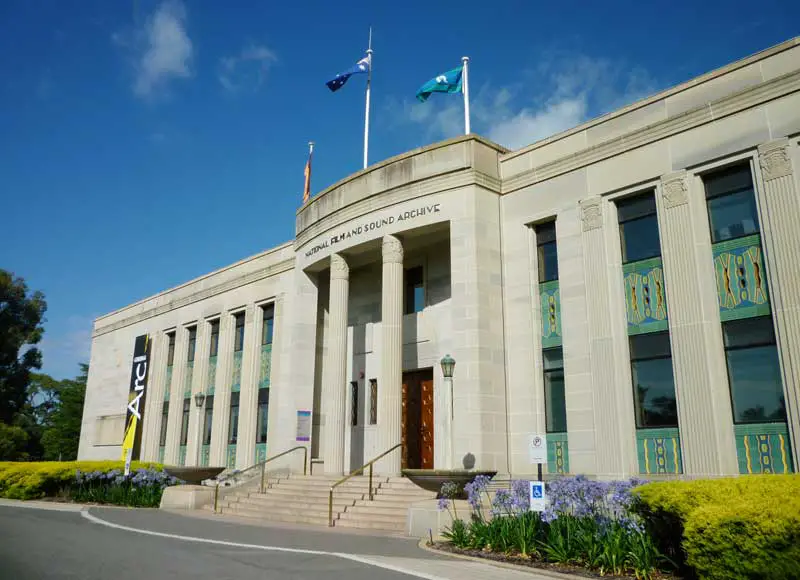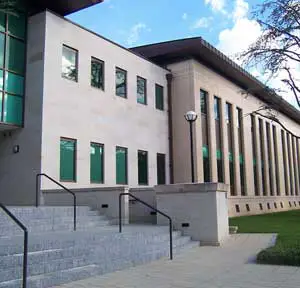
National Film and Sound Archives
The primary aim of the National Film and Sound Archives is to develop a comprehensive collection of Australian works and materials representing the history, technology and culture of the audiovisual media, from their origins to the present time. The NFSA will also collect international material selectively, as resources permit, and not to the detriment of Australian works and materials. The National Collection includes more than 1.3 million items. In addition to discs, films, videos, audio tapes, phonograph cylinders and wire recordings, the Collection includes supporting documents and artefacts, such as photographic stills, transparencies, posters, lobby cards, publicity, scripts, costumes, props, memorabilia and sound, video and film equipment.
Contact: (02) 6248 2000. Website. Location: McCoy Circuit, Acton, ACT.
Website
The main building is of Late 20th Century Stripped Classical style and has some of the finest examples in Australia of nationalistic Australian Art Deco design and detailing with an array of intact characteristics such as vivid decorative elements that serve no particular function, vertical straight lines, low-relief sculptures and zigzags. The many motifs of Australian animals, Aboriginal art and historic figures in science and medicine recall the Australian Institute of Anatomy, for which the building was designed. The formal exterior is clad in sandstone. The interior is no less formal, the major spaces being two double height exhibition halls on either side of a spacious vestibule.
Liversidge Street wing: built as the Institute of Anatomy, this was one of the key buildings in the first phase of Canberra’s development, built to broaden national interest and establish a tradition of archives and collections in the national capital. The courtyard became a quadrangle in 1999 with the construction of the very respectful and self-effacing section of the building that faces Liversidge Street.
Architect: W Hayward Morris
Adjacent to the main building is the former director’s residence, which is a significant example of an Art Deco residence but with fewer decorative elements than the main building.







